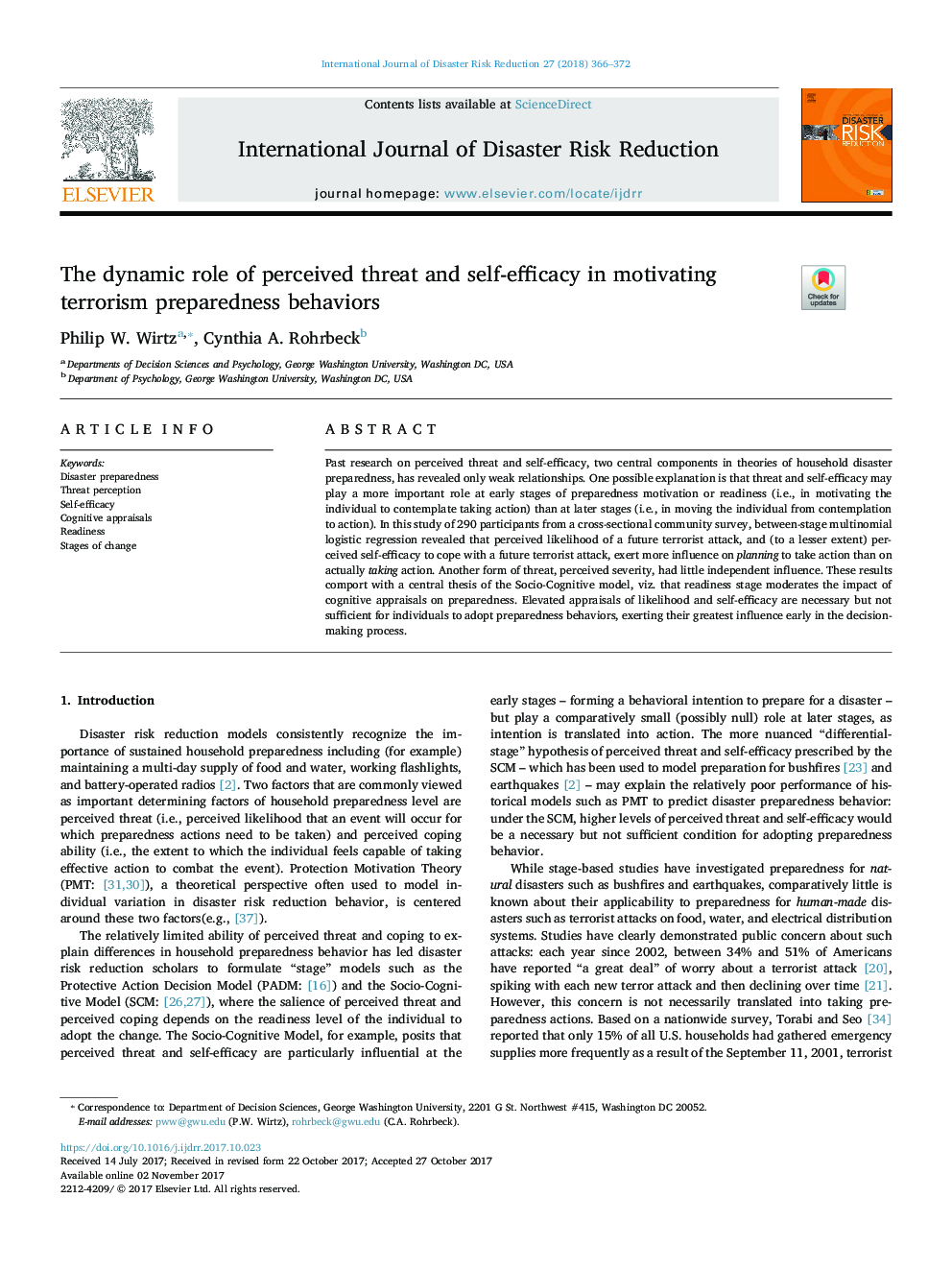| Article ID | Journal | Published Year | Pages | File Type |
|---|---|---|---|---|
| 7471991 | International Journal of Disaster Risk Reduction | 2018 | 7 Pages |
Abstract
Past research on perceived threat and self-efficacy, two central components in theories of household disaster preparedness, has revealed only weak relationships. One possible explanation is that threat and self-efficacy may play a more important role at early stages of preparedness motivation or readiness (i.e., in motivating the individual to contemplate taking action) than at later stages (i.e., in moving the individual from contemplation to action). In this study of 290 participants from a cross-sectional community survey, between-stage multinomial logistic regression revealed that perceived likelihood of a future terrorist attack, and (to a lesser extent) perceived self-efficacy to cope with a future terrorist attack, exert more influence on planning to take action than on actually taking action. Another form of threat, perceived severity, had little independent influence. These results comport with a central thesis of the Socio-Cognitive model, viz. that readiness stage moderates the impact of cognitive appraisals on preparedness. Elevated appraisals of likelihood and self-efficacy are necessary but not sufficient for individuals to adopt preparedness behaviors, exerting their greatest influence early in the decision-making process.
Keywords
Related Topics
Physical Sciences and Engineering
Earth and Planetary Sciences
Geophysics
Authors
Philip W. Wirtz, Cynthia A. Rohrbeck,
